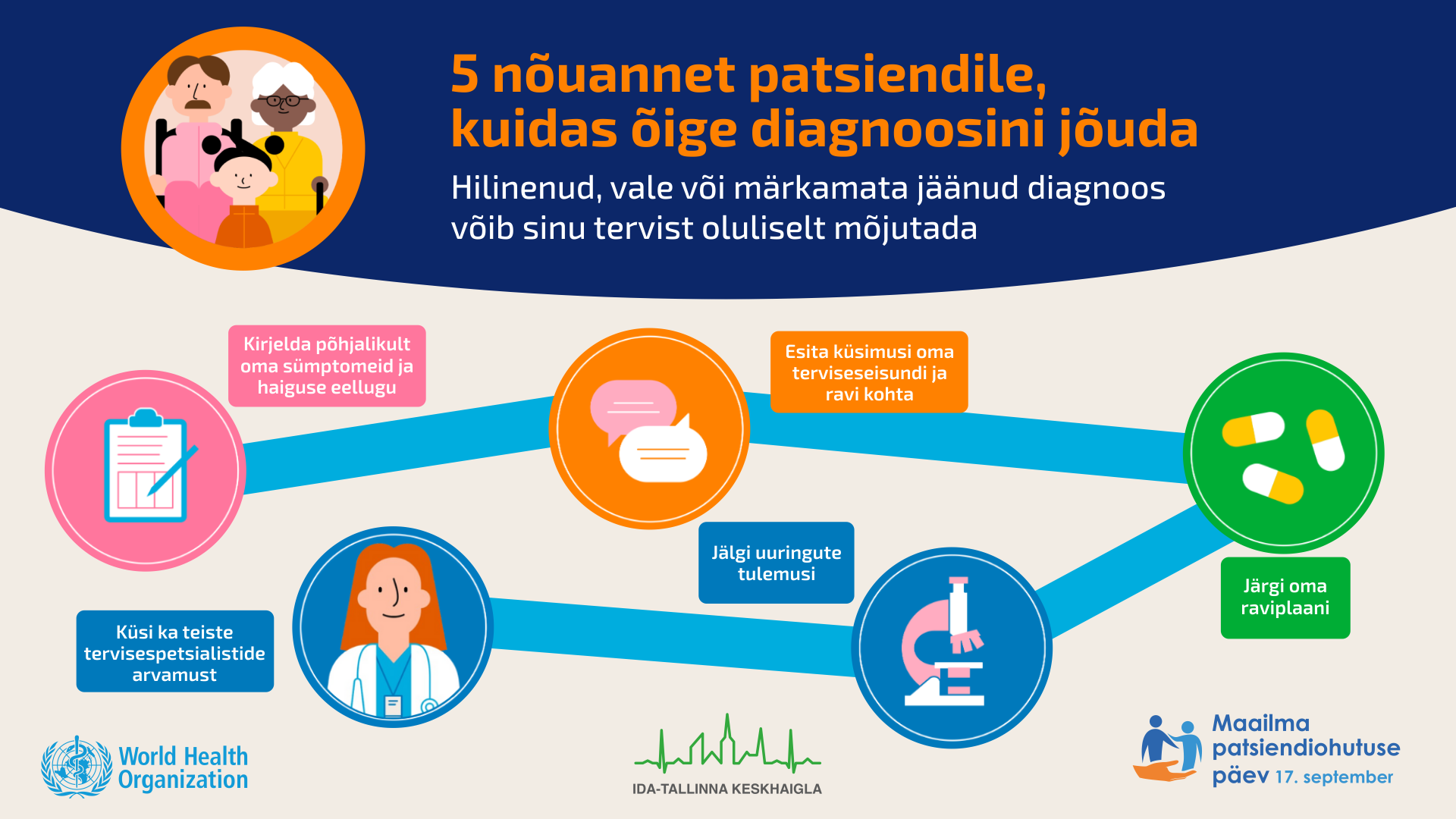Patient safety – making the right decisions, acting safely
17 September marks the fifth anniversary of World Patient Safety Day, focusing this year on improving diagnosis for patient safety.

The aim of the day is to raise public awareness and foster patient safety cooperation between health professionals, patients, health care managers and policy makers. This year’s slogan – ‘Get it right, make it safe!’ – highlights the pivotal role of a correct and timely diagnosis in ensuring patient safety.
Although a correct and timely diagnosis is one of the most important steps in resolving a patient’s health concern, diagnostic errors unfortunately remain a frequent occurrence. A diagnostic error is defined as the inability to provide a correct and timely explanation for a patient’s medical condition, or the inability to communicate that explanation to the patient in a comprehensible manner. A safety case related to a diagnostic error includes incorrect, delayed, or undiagnosed cases. The occurrence of diagnostic errors can be significantly reduced by addressing system-specific problems and cognitive factors. By system-related problems, we primarily mean those aspects of an organisation’s work that may contribute to diagnostic errors, such as a heavy workload, inefficient teamwork, and various types of communication problems between employees or between employees and patients. Cognitive factors include employee training, experience, as well as overconfidence, preconceptions, fatigue and stress.
From December 2023, we have implemented the Safety Incident Reporting and Investigation System (OTUS) in our hospital, one of the main objectives of which is to make health-related risks visible and prevent damage caused by risks in the future, ensuring the safest possible environment for both patients and hospital staff.
To create and support a strong safety culture, the ITK Quality Department encourages all hospital staff to report safety incidents using the OTUS environment. We also welcome you to talk openly and respectfully about safety incidents with your colleagues. Only in this way can we learn from our own and others’ experiences, draw conclusions, and improve our work processes to prevent harm or the risk of harm to the patient, including in the diagnostic phase.
To date, more than 200 safety incidents have been registered in OTUS, which may at first seem like a large number, considering that the system has been in use for less than a year. However, practice shows that the number of safety incidents is actually much higher and only a small proportion are actually reported. The main reason for not registering safety incidents is because they are not considered significant or because of the fear of criticism from colleagues. However, the examination of each registered case helps us to get as complete a picture as possible of the weak links in the treatment process, implement the necessary changes to improve patient safety and improve the overall quality of the hospital’s service. In addition, the investigation and analysis of safety incidents promotes communication and cooperation between colleagues and also between structural units.
As a result of patient safety work, several treatment guidelines have already been updated and attention has been paid to improving the quality of treatment services in both the diagnostic and treatment stages. For example, the analysis of safety incidents has led to the conclusion that the instructions for placing nasogastric tubes requires updating or that it has been agreed that patients need to be instructed more thoroughly in some activities. Discussions among health professionals within OTUS have provided a more comprehensive picture of many cases, while promoting better communication and teamwork to devise and implement the necessary measures to avoid similar situations in the future.

 Terviseportaal
Terviseportaal